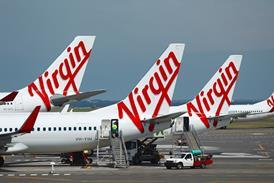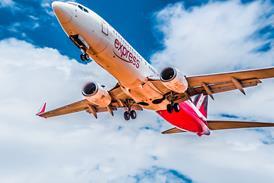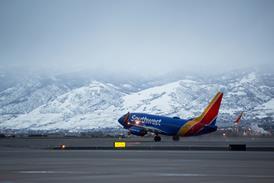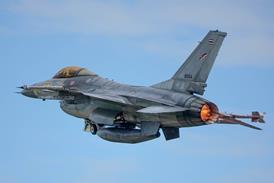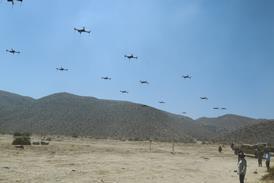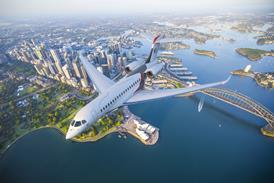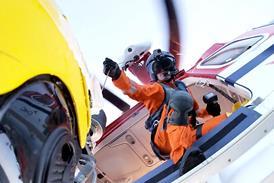The UK Royal Air Force aims to have its new Airborne Standoff Radar System (ASTOR) undertaking operational tasks by the end of next year. This comes after further slippage in delivery of some of the five Sentinel R1 intelligence, surveillance and reconnaissance (ISR) aircraft at the heart of the contract.
The first aircraft was delivered to 5 Squadron in the first quarter of this year. At a pre-Paris briefing on the system, Raytheon said the second would be delivered in the third quarter of the year, with the third and fourth around October and the fifth could slip into early 2008.
Prior to last July’s Farnborough show, the in-service date (ISD) for the aircraft was given as November 206, although there was talk of this slipping to March 2007 and the RAF expected all five aircraft and eight ground stations to be at Waddington by “mid-2007”. Initial operating capability – the point at which ASTOR is officially ready to be deployed – was expected within 15 months of the in-service declaration, with full operating capability given as two years after ISD.
Late last year, the UK Defence Procurement Agency agreed with Raytheon that three aircraft would be delivered by 31 March this year, with the rest by the end of 2007.
Raytheon refers questions on in-service dates to the UK Ministry of Defence, but Raytheon’s ASTOR project director Justin Monger says that the company “ran into some issues at the end of last year” relating to the fitting of radomes on the aircraft. The final aircraft in the batch is also experiencing some component shortages, due to stocks having been raided to get the earlier aircraft completed.
Verification flights
On the plus side, he says that testing of the aircraft’s primary sensor, the combined synthetic aperture radar (SAR) and ground moving target indicator (GMTI) is going well. “The only development left is two verification flights for the SAR radar and two GMTI flight tests.” The GMTI tests are to check the tracking of small, slow-moving targets: “We can already do large targets moving slowly, or small targets moving quickly.”
Five of six tactical ground stations and one of the two operational-level ground stations have now been delivered.
Wg Cdr Harry Kemsley, commanding officer of 5 Sqn, says the task of his unit is “to give the army the information they need to know, when they need to know it”. Its formation as an army co-operation squadron restores it to the role it adopted when it was founded in 1913. Of 300 personnel in the unit, almost half will come from the army.
The UK armed forces’ seemingly perpetual shortage of resources both makes the squadron’s role more important than ever and – potentially – affects its planned ability to train up crews.
“Very often in the modern environment, we’re stressed by financial pressures and lack of troops on the ground,” acknowledges Kemsley. The radar’s capabilities give him the ability to scan large areas of terrain and then direct those troops to investigate the areas of greatest interest.
Similarly, the GMTI will give his crews the potential to spot an abnormal pattern of ground movements that could endanger ground forces, such as vehicle-borne suicide bombers. “That’s particularly important for the young men and women driving convoys in very bad parts of the world. We can tell if a vehicle is approaching them… we might be able to see just enough and warn a convoy commander that something is changing [in his area].”
While Kemsley says that the non-availability of the Sentinels in the UK has not had an impact on his crews’ training programmes, interpreting the pictures provided by the SAR equipment may yet be a difficulty.
ASTOR is drawing people from this small pool of personnel, but: “We’re in an environment where image analysts are of incredible importance to several programmes. On top of that, with people leaving the service, you can see the magnitude of the problem. The short answer is we’re short of people, image analysts in particular.”
Despite this, he says his aim is to reach operational capability as quickly as possible in the next year. “My target is to be in the theatre of operations by the end of next year. From what I’ve seen, that’s pessimistic; I’m confident we can do it before.” He does not rule out the possibility of squadron aircraft being deployed to the Middle East as part of that training.
Useful lessons
Among those undergoing training on the Sentinel’s systems are crew members from the UK Royal Navy’s small fleet of Westland Sea King AEW7 airborne early warning helicopters, which handle the same type of work: “The RN has learned some really useful lessons that we can learn,” he says. Similarly, 5 sqn will seek to learn lessons from crews of the US Air Force’s fleet of E-8A JSTARS aircraft, which fulfil much the same role as the Sentinels and will be a key asset with which the RAF aircraft will work.
He firmly believes that the RAF does not yet fully appreciate the advantages that will flow from having an aircraft of the Sentinel’s capabilities at its disposal.
The aircraft, a heavily-modified Bombardier Global Express with distinctive under-fuselage canoe fairing for the radar, satellite communications radome and a 380mm (15in) taller fin, is due to operate at over 40,000ft (12,200m) and, despite its payload, Kemsley says the aircraft has operated “very comfortably well above 40,000ft”.
Despite the considerable aerodynamic changes to the aircraft, he says pilots are reporting no significant handling differences between Sentinel and a standard Global Express.
Monger says that the aircraft is “not 100% capable right now” because the RAF wanted an interim capability to enable training to get underway. The pressing needs of the development and training programmes are the reason why the aircraft will not be at le Bourget this week.
“There’s no easier way to get 5 Sqn excited than to suggest they give up their aircraft,” he says. “They liked the idea of coming to Paris, they just didn’t like the idea of losing their aeroplane.”
Source: Flight Daily News

